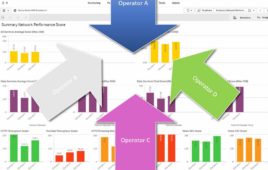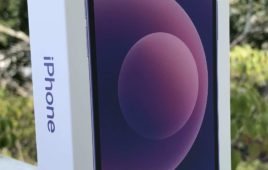It’s no secret Sprint has been fighting to get its feet on solid ground.
The carrier last year undertook a massive cost-cutting project to slash more than $2 billion from its run rate expenses, and clawed its way first to 22,000 postpaid phone net additions in the first quarter 2016 and then 173,000 postpaid phone net additions in the second quarter.
But analysts like BTIG’s Walter Piecyk have said Sprint’s efforts haven’t yet crossed the threshold into stability. In order to halt cash burn, Piecyk said, Sprint would need to add more than 3 million postpaid voice customers. And in order to keep those customers and keep churn down, Piecyk said, Sprint will likely need to invest more than the current $376 million per quarter to maintain and upgrade its network.
So the question is, what will be the game changer for Sprint?
Wells Fargo has an answer: carrier aggregation.
Sprint has long touted its expansive spectrum holdings as an asset, and it is exactly those holdings that put it in prime position to improve network experience and draw customers, Wells Fargo said.
In a July note, Fritzsche acknowledged the dip in capital spending but said the network was already seeing improved performance results thanks in part to the proliferation of carrier aggregation-capable handsets in Sprint’s base. As of the second quarter, she said, 35 percent of Sprint’s base had handsets that were carrier aggregation capable.
But the rise of the iPhone 7 and Sprint’s roll out of three-channel carrier aggregation – which it has been quite publicly testing over the past several months – could prove to be a watershed combination, Fritzsche said.
“In the case of Sprint, we believe the iPhone 7 could be a game changer for the consumer network experience given the greater amount of spectrum it has vs. all the other national peers and the high likelihood that the handset will have 3 carrier aggregation (which should allow for significantly faster speeds),” Wells Fargo senior analyst Jennifer Fritzsche wrote in a Monday research note. “This better network experience should lead to greater sub gains. An improvement in sub gains should help S’s top line. This top line improvement and additional cost-containment efforts allow for better EBITDA and an eventual path to positive FCF generation, in our view.”
Though it is expected to remain substantially behind T-Mobile, Wells Fargo said Sprint stands to gain a significant number of customers in a “post-iphone 7 world.”
Fritzsche said recent porting trends show both T-Mobile and Sprint are “showing positive ports” against AT&T and Verizon. Sprint is expected to capitalize on this with pre- and postpaid customer additions of 1.98 million in 2016 and 2.61 million in 2017, she said.
Fingers crossed for Sprint here, but with Verizon’s Monday roll out of nationwide LTE-Advanced including two- and three-channel carrier aggregation, it looks like Sprint may be up against some stiff competition.




